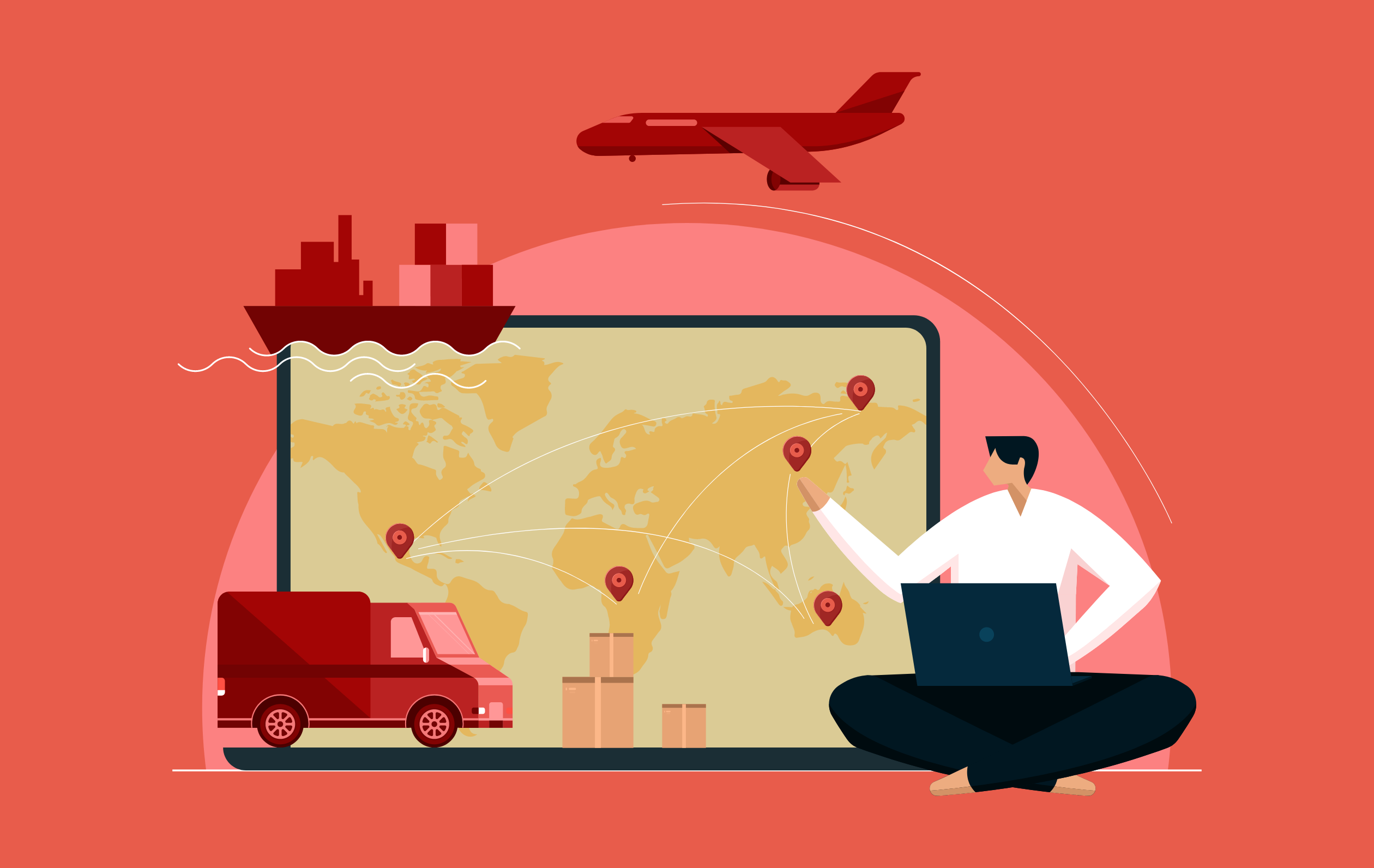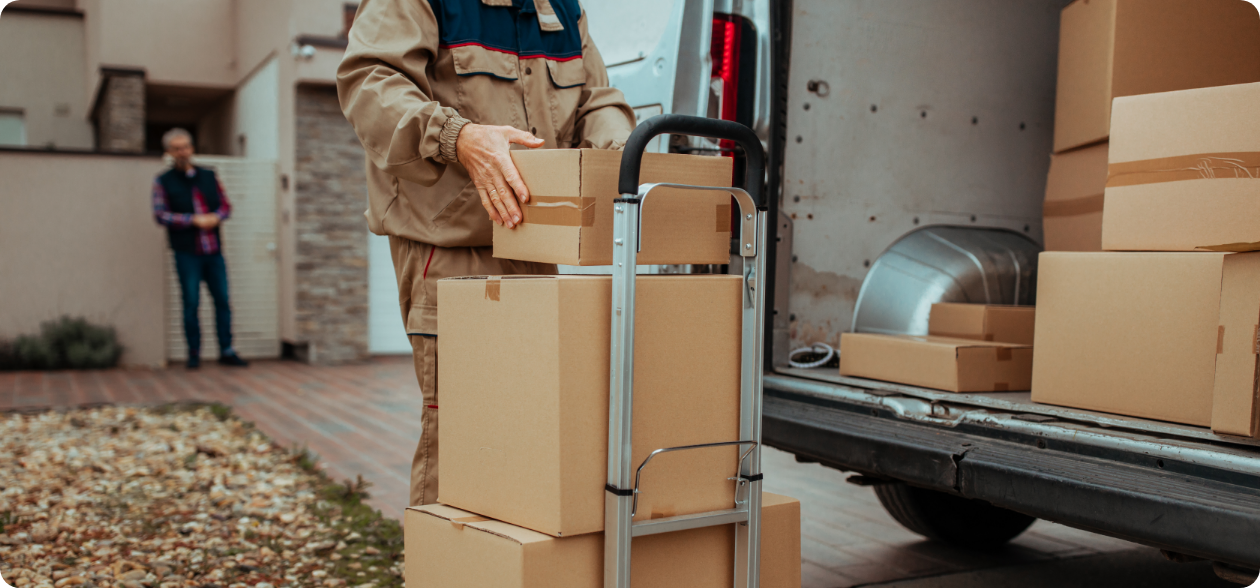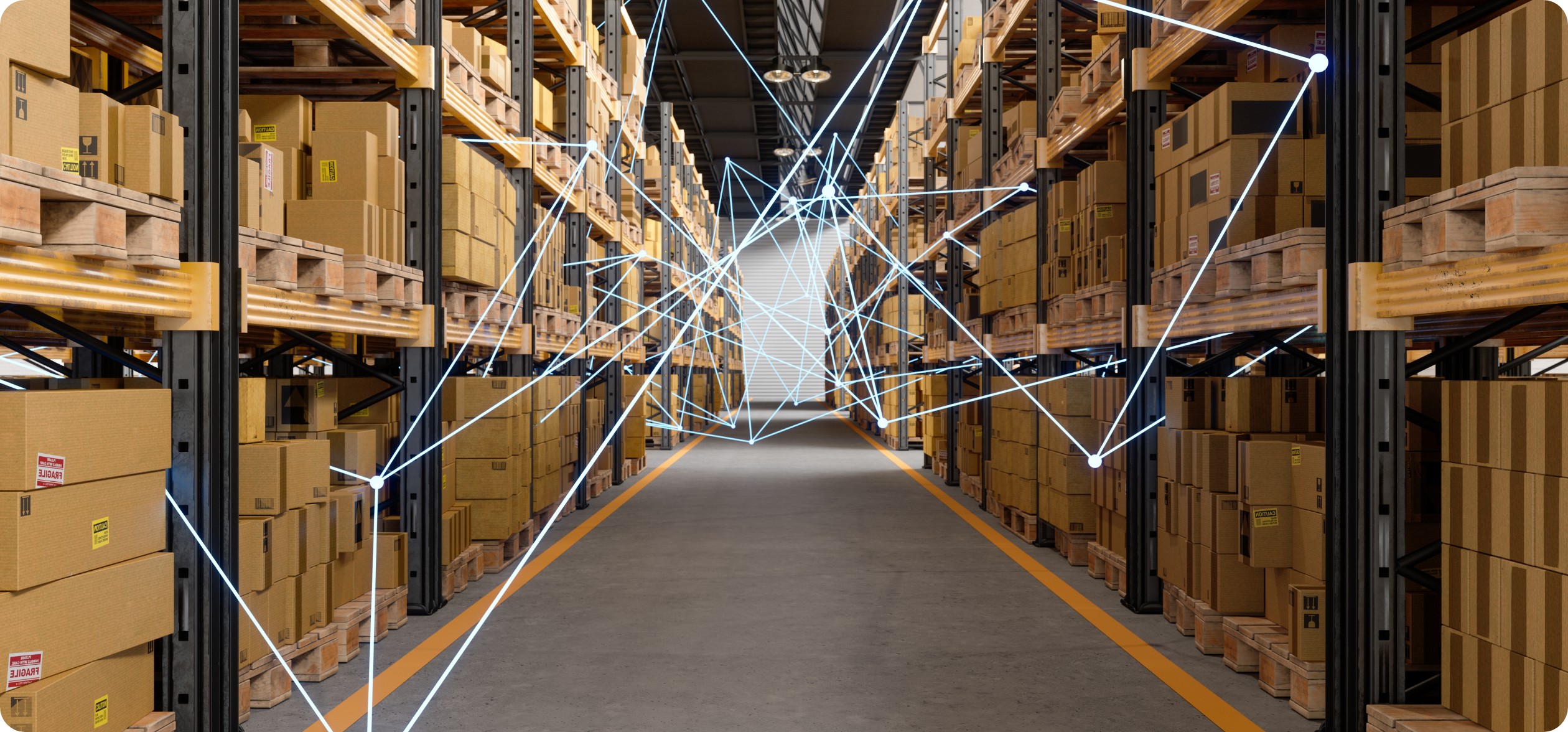By Miva | April 30, 2021

See why top ecommerce brands use Miva’s no-code platform to run
multiple stores, manage massive catalogs, and grow their revenue.
A direct-to-consumer model offers many advantages for wholesale businesses, digital-native brands, and product manufacturers. If this is your business’ first time selling DTC, you’ll probably need to retool your fulfillment operations and prepare your supply chain for increased demand. This retooling will involve every aspect of how you fulfill orders, from customer service and processing returns to warehousing and product delivery.
In this article, we break down the key components of direct-to-consumer logistics and how to optimize each to improve efficiency and support growth.
In a DTC model, a manufacturer markets and sells their products directly to end consumers rather than going through a retailer, reseller, or other third party. DTC brands have full control over every aspect of their product journey, from merchandising and marketing to inventory management and shipping. Throughout each of these steps, DTC businesses can maintain a high level of communication with their customers, helping to solidify and personalize their brand experience.
DTC retail models have enjoyed an explosion in popularity over the past several years—between 2016 and 2022, DTC ecommerce sales more than tripled in the United States. DTC models offer businesses a number of significant benefits; by cutting out intermediaries such as distributors and retailers, DTC brands can enjoy increased autonomy, efficiency, and profitability. DTC models have been particularly popular across industries such as consumer packaged goods and certain regulated products—for instance, direct-to-consumer wine shipments have seen a large amount of success.
Direct-to-consumer logistics, or DTC logistics, refers to how a DTC business’ products are managed, transported, stored, and delivered. DTC logistics encompasses a range of operations such as supply chain management, inventory management, warehousing, pick and pack, and DTC shipping and fulfillment.
For many manufacturers, adding DTC to their business model will increase the volume of shipments and the number of locations to ship to. The challenge is to create a solid DTC logistics infrastructure, supported by the right technology, that meets customer expectations while minimizing costs.
Direct-to-consumer fulfillment is one aspect of direct-to-consumer logistics. In general, ecommerce fulfillment includes the processes involved in getting products from a business to its customers—everything that happens after a customer hits the “Buy Now” button. DTC fulfillment includes order management, customer communication, shipping, delivery, returns, and more.
For merchants accustomed to selling B2B exclusively through other businesses and distributors, transitioning to DTC fulfillment means taking greater ownership of these processes.
To establish a relationship with your customers and create a good impression for your brand, you’ll need to develop an effective DTC fulfillment strategy that expands on your existing capabilities and introduces new ones. Here are a few crucial considerations to factor into your DTC fulfillment plan. 
Different DTC brands will have varying logistics concerns based on their industry. While fulfillment operations for consumer packaged goods, cosmetics, clothing, and other common retail items may be fairly straightforward, DTC businesses whose products are challenging to sell online will likely need more specialized solutions.
For instance, ecommerce brands that sell wine and other alcoholic beverages directly to consumers will need to navigate different state and local regulations. Sellers need to stay in compliance with a number of direct-to-consumer wine shipping laws—for example, having direct-to-consumer wine shipping licenses for each destination state, paying appropriate state and local taxes, and using a common carrier for delivery. In addition, DTC wine retailers will need to build age verification processes into their online buying journey and use special packaging to ensure their products arrive safely.
Other DTC industries that may require unique or specialized fulfillment solutions include perishables and cold chain products, chemicals and pharmaceuticals, and firearms and ammunition.
Partly in response to Amazon Prime’s two-day shipping service, modern consumer expectations are fueled by fast, free, and no-hassle shipping. Meeting these expectations can be challenging, especially for companies that operate with limited budgets. Sellers will also need to consider shipment frequency and product size as these factors will impact aspects such as cost, logistics, inventory, and returns.
To ensure your fulfillment strategy is seamless and cost-effective, you’ll want to consider different shipping strategies in your DTC logistics. You might partner with a third-party shipping provider, implement a click and collect strategy, or set free shipping thresholds to ensure your margins are met. All options come with their pros and cons—the right strategy will depend on factors like the products you sell, their costs, and the geographic locations of your customers.
As your business handles a higher order volume, you will need more space to accommodate direct-to-consumer distribution. This could mean obtaining additional DTC warehouse space, expanding and reorganizing existing facilities, and fulfilling from physical locations to provide customers with more flexibility. These expanded options can help your business move into new geographic locations, enabling you to speed up fulfillment, lower shipping costs, serve a wider audience, and mitigate risks with unexpected delays.
A shift to DTC selling also comes with the need for efficient last-mile delivery—the last leg of the shipping process. Last-mile logistics includes factors like delivery routes, rider allocation, and traffic consideration. To ensure a frictionless last-mile delivery process, consider investing in technology that can offer real-time tracking, delivery route planning, and communication between the delivery person and customer.
Operating a successful DTC channel often translates to greater demand and higher order volume, requiring your business to achieve more efficiency and agility than ever before. To achieve success, you will want to consider improving your DTC warehouse setup.
Accurate data and DTC warehouse organization are essential to ensuring customers receive the correct item while helping your business maintain a steady revenue stream. This involves measuring inventory levels, predicting customer demand, and providing up-to-date stock information to consumers.
To create a smoother workflow, consider automating your back-end processes, working with a DTC warehouse management system, and investing in best-of-breed ecommerce fulfillment solutions. When combined, these elements can streamline your business across the supply chain, from product manufacturing to delivery.

If you have a network of fulfillment centers, you can strategically distribute your inventory across different warehouse locations to get products to customers more quickly. Storing inventory close to your customers can help cut costs and allow you to provide faster turnaround and more competitive shipping options.
Inventory management is how you organize and keep track of your product stock. As a DTC merchant, you’ll want to create a more efficient process for managing and replenishing inventory. This will help reduce costs, forecast demand, identify slow-moving units, and process orders—all of which can bring greater cost savings and higher margins.
You’ll want to use your ecommerce platform or equivalent software to sort, filter, and organize all customer orders. Effective order management will allow you to see where orders are in the fulfillment process, make changes to any orders post-purchase, send customer communications, and identify any issues requiring immediate attention.
To evaluate the performance and the effectiveness of your DTC logistics operations, consider looking into analytical tools and reports. You can use these tools to gain insight into which fulfillment centers you need to stock, how much time you have before inventory runs out, and each shipping method’s costs, average order value, and average time to fulfill. This can help inform your decisions for optimizing your supply chain and overall business operations.
Managing DTC logistics doesn’t stop after a product is delivered to a consumer. Since shoppers can’t see, feel, or try out the products that they buy online, they may not always get their order right the first time and may want to return or exchange their purchase. Shipping products one way to customers is already costly and vulnerable to delays—returns add another layer of complexity and expense on top of that.
To streamline returns, make sure you have a clear and flexible returns policy and solid customer service that provides up-to-date communication during every step of the process. Look for any bottlenecks in your return process that can increase costs, like misplaced products coming back into stock or return delays. A positive return experience allows you to earn customer trust and win customers for life.
Forging a direct path to your buyers involves owning every touchpoint in the customer journey. Former B2B sellers and brand manufacturers are learning to effectively pick, pack, and deliver products while keeping their customers informed throughout the entire fulfillment process. Optimizing your direct-to-consumer logistics will allow you to differentiate your brand, exceed customer expectations, and set your business up for growth.
Looking to start selling direct? Download our whitepaper on how to build a resilient DTC brand that sustains your growth in the years to come.
This blog was published on April 30, 2021 and updated on October 12, 2022.
Share this article:
No worries, download the PDF version now and enjoy your reading later...
Download PDF Miva
Miva
Miva offers a flexible and adaptable ecommerce platform that evolves with businesses and allows them to drive sales, maximize average order value, cut overhead costs, and increase revenue. Miva has been helping businesses realize their ecommerce potential for over 20 years and empowering retail, wholesale, and direct-to-consumer sellers across all industries to transform their business through ecommerce.
Visit Website